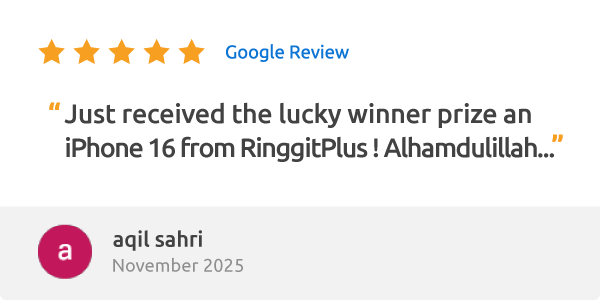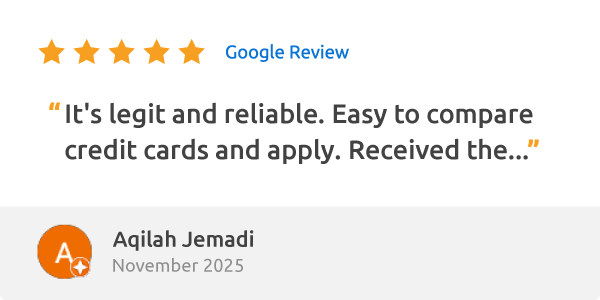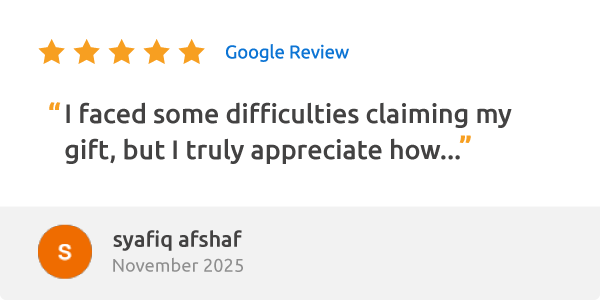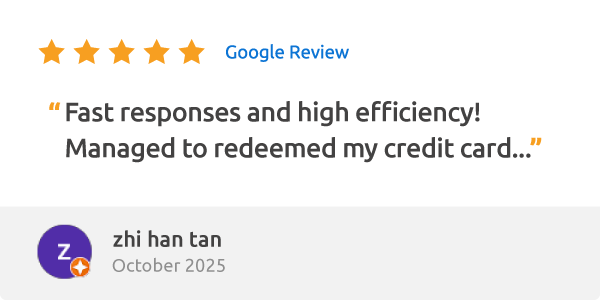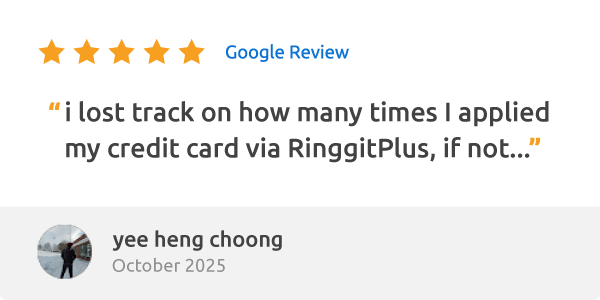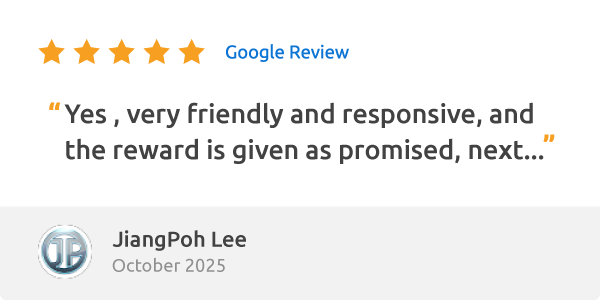Know your borrowing power with the RinggitPlus DSR Calculator. Understand your loan limits and plan your finances with confidence.
Why Check Your Debt Service Ratio?
Your Debt Service Ratio (DSR) is one of the key numbers banks check when you apply for any loan in Malaysia. It shows banks whether you can afford to take on another monthly payment alongside what you already pay each month.
The RinggitPlus DSR calculator above tells you this number in seconds. Once you know your DSR, you'll understand your borrowing power and can apply for loans you're more likely to get approved for.
What Is DSR and Why Do Banks Care?
DSR is a percentage that compares your total monthly debt payments to your net monthly income. Banks use this single number to answer one question: Can this person comfortably handle another loan payment?
- A lower DSR means you have plenty of income left after paying your debts. Banks see you as a safe borrower and are more likely to approve your loan with better terms.
- A higher DSR means most of your income already goes to debt payments. Banks worry you'll struggle with another payment and may reject your application or offer you a much smaller loan amount.
Your DSR affects three things when you apply for any loan: whether the bank approves you, how much they will lend you, and what interest rate they will offer you.
How to Calculate Your DSR
The DSR formula is straightforward.
DSR (%) = (Total Monthly Commitments ÷ Net Monthly Income) × 100%
- What counts as your Net Monthly Income? This is your actual take-home pay after statutory deductions like EPF (Employees Provident Fund), SOCSO (Social Security Organisation), and income tax (PCB). Include your basic salary and any fixed regular allowances like transport or housing allowances. Banks generally don't include one-off bonuses, overtime pay, or irregular income unless they can be reliably documented over 6 to 12 months.
- What counts as your Total Monthly Commitments? This includes every debt payment you must make each month that is reported to CCRIS or CTOS. Count your existing home loan, car loan, personal loan, PTPTN education loan, and the minimum payment on your credit cards. Don't include regular expenses like rent, utilities, or groceries because these aren't debt obligations reported to credit bureaus.
A real example: Aiman earns RM5,000 net monthly income. He pays RM800 for his car loan, RM200 for his PTPTN loan, and RM150 minimum payment on his credit card. His total monthly commitments are RM1,150.
His DSR calculation: (RM1,150 ÷ RM5,000) × 100 = 23%.
With a 23% DSR, banks would see Aiman as a very attractive borrower with high approval chances.
Understanding Your DSR Level
Your DSR percentage tells you exactly where you stand with banks. The following tiers reflect general banking practice and risk assessment in Malaysia:
- Below 30% signals excellent financial shape. Banks view you as a prime borrower with the fastest approval path and access to the best interest rates. You have strong borrowing power and can handle high loan amounts.
- Between 30% and 40% is considered healthy and desirable. You are responsibly serving your debt, leaving a comfortable disposable income. Banks will approve you comfortably for most loans and are happy to lend you a high loan amount.
- Between 41% and 60% is classified as moderate/acceptable risk. You are generally near the maximum DSR limit accepted for most middle-income borrowers. Banks become more cautious and may limit the loan amount. You should aim to reduce debt before applying for the full amount to ensure the best terms.
- Between 61% and 70% is a high-risk threshold. You are seen as financially stretched, and approval is only possible if you have a high net income or secure the loan with collateral (like a house). You must focus on reducing debt or consider a joint application before submitting any new loans.
- Above 70% is severely over-leveraged. Banks view this as a critical risk, meaning you lack the essential disposable income needed for basic living and financial emergencies. New loan applications face a near-certain rejection because approving them would likely destabilize your finances. You must urgently focus on paying down current commitments before any future borrowing is possible.
Different Banks Have Different DSR Limits
Bank Negara Malaysia (BNM) provides guidelines for responsible lending, which financial institutions must follow to ensure borrowers can afford their commitments. However, each commercial bank sets its own acceptable DSR limits based on your income level and the type of loan:
- For Lower to Middle Income Earners (e.g., net salary below RM3,000 to RM5,000): Most banks prefer DSR below 60%. They're stricter with lower-income profiles because there is less margin for financial difficulties.
- For High Income Earners (e.g., net salary above RM10,000): Banks are more flexible and often accept DSR up to 70%. Higher income provides more buffer for living costs and unforeseen expenses.
A rejection from one bank does not mean all banks will reject you. Different banks have different risk appetites and their own DSR rules. This is why knowing your DSR before you apply helps you target the right banks and loan package for your specific situation.
How to Improve Your DSR Quickly
If your DSR is too high, you have two ways to improve it: reduce your monthly debt payments or increase your monthly income. Here are proven methods:
- Pay Down Existing Debt: Focus on clearing your smallest debts first. Paying off a RM5,000 personal loan completely removes that monthly payment from your commitments, immediately improving your DSR. Even paying down credit card balances to reduce your minimum payment helps.
- Consolidate Your Debts: If you're making multiple high-interest payments on credit cards or personal loans, combine them into one new personal loan with a lower interest rate. This often reduces your total monthly payment, which lowers your DSR.
- Apply Jointly with a Spouse or Family Member: A joint loan application combines both incomes in the DSR calculation. This significantly increases the bottom number in the formula, immediately lowering your DSR percentage. Both applicants become equally responsible for the loan, so only do this with someone you trust completely.
- Increase Your Documented Income: If you have side income that isn't currently counted, start documenting it properly through bank statements and income tax filings. Getting a raise at work improves your DSR permanently.
Common Questions About DSR
Is DSR the same as my credit score?
No, DSR measures your ability to pay based on income versus debt. Your credit score (CCRIS/CTOS) measures your payment behaviour, whether you pay on time. Banks check your DSR, your credit score, and other factors. You might have a perfect payment history, but still get rejected if your DSR is too high because you simply can't afford another payment.
Does my credit card debt affect my DSR even if I pay it off monthly?
Yes. Banks count your credit card's minimum monthly payment in your DSR calculation, even if you always pay the full balance. They do this because they need to calculate based on your minimum required payment, not what you choose to pay.
Will my variable income count towards DSR?
Yes, but banks handle it differently. If you earn commissions or have irregular income, banks typically average your earnings over the past 6 to 12 months using your bank statements and income documents. You will need consistent documentation showing this income is reliable and ongoing.
Can applying with my spouse improve my DSR?
Absolutely. Joint applications combine both net incomes, which increases the bottom number of the DSR formula. This immediately lowers your DSR percentage. For example, if you earn RM4,000 and have RM1,600 in commitments, your DSR is 40%. If your spouse earns RM3,000 with no debts, your joint DSR drops to approximately 23% (RM1,600 divided by RM7,000).
Do my monthly bills, like rent and utilities, count in DSR?
No. DSR only includes debt obligations that appear on your credit bureau report (CCRIS/CTOS). House rent, groceries, utilities, and phone bills are living expenses but not debts, so they don't count in the DSR formula. However, banks may consider these separately when assessing your overall affordability.
Why did the bank reject me even though my DSR is low?
A good DSR is important, but not the only factor. Banks also check your credit score and payment history. If you have many late payments, defaults, or a history of missing payments, banks will reject you regardless of DSR. They also have maximum lending limits based on your income level. Sometimes, the loan amount you want simply exceeds what they will lend to someone with your income, even with perfect DSR.
Do Buy Now Pay Later (BNPL) services affect my DSR?
Yes, if the BNPL provider reports your installment plan to the credit bureau (CCRIS/CTOS). Banks will treat these monthly instalments as debt commitments, which increases your DSR. If you're planning to apply for a major loan soon, finish paying off BNPL purchases first.
Will a DSR rejection appear on my credit report?
The loan application itself appears in your CCRIS report under "Applications for Credit". The report shows whether you were approved, rejected, or if the application is pending. However, a rejection doesn't create a permanent negative mark but can signal caution for the next 12 months. Banks understand that different lenders have different rules. One rejection shouldn't stop you from improving your DSR and applying elsewhere.
My self-employed income varies. How do banks calculate my DSR?
Banks use your net business income after expenses, averaged over at least 6 to 12 months, using your tax returns and business bank statements to verify income stability. Be prepared to provide more documentation than salaried employees need.
What to Do After Checking Your DSR
Now that you understand your DSR, you can take the right next steps based on your number.
- If your DSR is below 40%, you're in a strong position to apply for loans. Use the calculator above to verify your exact DSR, then try our loan matching chatbot above. Answer a few questions about your income and needs, and we'll match you with loans where you have the best approval chances.
- If your DSR is between 41% and 60%, you can still get approved, but you may face limits on loan amounts. Consider if a smaller loan would serve your needs, or use the calculator to test how paying down existing debt would improve your DSR before you apply.
- If your DSR is above 60%, focus on improving your number before applying for new loans. Pay down existing debts, consider debt consolidation, or explore joint applications with a spouse. Applying now will likely result in rejection, which wastes time and appears on your credit report.
Use the DSR calculator above to test different scenarios. See how paying off your car loan would improve your number, or how a joint application with your spouse would change your borrowing power. Once you're confident about your DSR level, use our loan matching chatbot to find loans suited to your profile.


